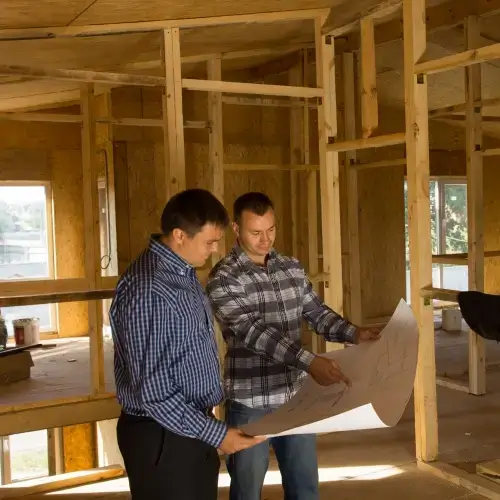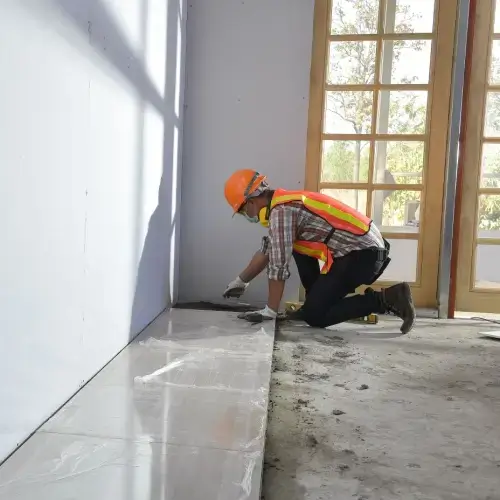Home / Home Loans / What is a construction l…

Key takeaways
- A construction loan is a type of home loan designed to finance the building of a new home or the renovation of an existing home.
- Construction loans function very differently to standard home loans, having multiple payout stages and typically being interest-only until construction is finished.
- Whether you’re an owner-builder building your dream home or looking to build an investment property, a construction loan could be suitable for you.
Expert tips for managing a construction loan
Our General Manager of Money, Stephen Zeller, has some tips for prospective homebuilders looking to take out a construction loan.

Take advantage of the interest-only period
While your property’s being built, you’ll be making interest-only payments towards your home loan, which will be smaller than the principal and interest payments you’ll be making once construction is finished. With that in mind, you may want to consider making extra repayments towards your home loan during the interest-only period, if you can afford to do so and if your home loan allows for it. That way, you’re getting ahead on your home loan while your repayments are cheaper.
Have your building plans sorted
Before you start looking around for a construction loan, make sure your building plans are locked down and ready to go. Make sure you’ve found a reputable licensed builder, and figured out whether you want a cost-plus contract or a fixed price building contract. Double-check everything, so you know you’re as prepared and ready to go as possible.
Understand your loan structure
Construction loans are a unique product with a slightly more complex structure than most other home loans. With this in mind, ensure you’re familiar with the different stages of the construction process and how they correspond with the different stages of your construction loan.
Construction loans explained
What is a construction home loan?
A construction home loan is a home loan designed to fund either the building process of a new home, or major renovations to an existing property. They’re typically taken out by the future owner, having contracted a builder to handle construction for them.
A construction home loan can be used for both homes and investment properties, meaning they’re just as suitable for home owners doing renovations as they are a property investor looking to expand their portfolio.
How do construction loans work?
 Unlike other types of home loans, once you’ve been approved for your requested construction loan amount, your lender won’t give you access to your full loan balance immediately. Instead, your lender will release a portion of your loan at a time, in line with what’s called a progress payment schedule.
Unlike other types of home loans, once you’ve been approved for your requested construction loan amount, your lender won’t give you access to your full loan balance immediately. Instead, your lender will release a portion of your loan at a time, in line with what’s called a progress payment schedule.
Each individually released sum, referred to as a ‘progressive drawdown’ or ‘progress payment’, corresponds with a different stage of the construction process, and is released so it can be paid to your builder.
During construction, while you’re still making payments as part of your progress payment schedule, your construction loan will typically be interest-only. Once construction is finished and your last progress payment has been made, your construction loan will revert to a regular principal and interest home loan, and your home loan repayments will go from smaller interest-only repayments to larger principal and interest repayments.
What kind of interest rate do construction loans come with?
Construction loans are typically variable rate home loans; while some lenders may offer fixed-rate construction loans, these products are less common. Being on a variable rate home loan means that your interest rate can fluctuate based on lender decisions and the RBA cash rate.
Whether you’re still making interest-only repayments or have moved onto making principal and interest repayments, the size of your repayments will change if your interest rate changes.
Managing a construction loan
What kind of fees will I pay on a construction loan?
Generally speaking, you’ll pay the same variety of upfront and ongoing fees on a construction home loan as you would most other home loans. However, construction home loans do usually come with what’s called a ‘progress draw fee’, which is a fee you’ll pay for each progress payment made.
That being said, be sure to read the Key Fact Sheet of any construction loan you’re looking at for a full understanding of the fees and charges involved.
What are the five stages of construction loans?
 The building of a new house will typically involve five major stages of construction, which are:
The building of a new house will typically involve five major stages of construction, which are:
- The base stage, in which the block of land is prepared to be built on, any necessary underground connections are made and the concrete slab is poured.
- The framing stage, in which the skeleton of the building’s walls and roofs is built. This will include the installation of window frames and door frames.
- The lock-up stage, during which the building’s exterior walls are installed, along with doors, windows, roofing and external cladding.
- The fit-out stage, in which the internals of the building are installed, including:
- Utility lines, including gas, electricity and plumbing
- Interior cladding, floors, skirting boards and tiling
- Lights, switches and power points
- Cabinets, fans, internal doors, shower screens and mirrors.
- The completion stage, at which the finished building will be inspected, the site will be cleaned of debris and equipment. Landscaping will typically occur and any last touches will be made. This is also when your final payment will be made to the builder, and a valuer may conduct a valuation of the new property.
How will my construction loan change over the construction process?
Because of the way the progressive drawdown structure works in the context of a construction loan, your construction loan repayments will start out at their smallest, and then grow in size with each successive progress payment made as each stage of construction is completed.
The other major change you’ll see to your construction loan is in the type of home loan repayment you’re making. Your repayments will be interest-only to start with and will stay that way until construction is complete.
Once the property is built and finished, though, your construction loan will revert to a regular principal and interest loan. This in turn means that your repayments will become principal and interest repayments and will subsequently be significantly larger than your previous interest-only repayments.
Important to know
Is a construction loan right for me?
When it comes to most types of home loans, figuring out if they’re appropriate for you will largely depend on your financial situation and circumstances. However, a construction loan is expressly designed to meet the needs of borrowers looking to build a new home or investment property.
So, if that’s you, you’ll almost certainly need a construction loan, regardless of the finer points of your broader financial situation.
That being said, you’ll definitely want to compare your options to try and find the construction loan you feel is most suitable for your financial needs.
Will RBA cash rate changes affect my construction loan?
If the Reserve Bank of Australia (RBA) changes the cash rate, it will have an impact on the size of the interest repayments you’re making towards your construction loan. If the cash rate goes up, your construction loan interest rate will likely go up, and vice versa.
The proportional impact on the size of your home loan repayments will be larger if you’re still in the interest-only phase of your construction loan. If your property has been built and you’ve reverted to making larger principal and interest repayments towards your home loan, any cash rate-related increases or decreases to your home loan repayments may seem smaller by comparison.
Meet our home loans expert, Stephen Zeller
Stephen has more than 30 years of experience in the financial services industry and holds a Certificate IV in Finance and Mortgage Broking. He’s also a member of both the Australian and New Zealand Institute of Insurance and Finance (ANZIIF) and the Mortgage and Finance Association of Australia (MFAA).
Stephen leads our team of Mortgage Brokers, and reviews and contributes to Compare the Market’s banking-related content to ensure it’s as helpful and empowering as possible for our readers.


